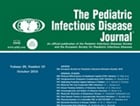Discussion
The concomitant administration of multiple vaccines at a single clinic visit reduces the number of required visits to healthcare providers and can improve compliance with vaccine recommendations and coverage in at-risk groups. For travelers, concomitant administration of vaccines maximizes protection against multiple diseases within the often narrow timeframe available between vaccination and the start of travel. However, potential interactions between vaccines need to be assessed before concomitant administration.
In this report, we summarize the findings of 10 phase 3 and 4 clinical studies evaluating coadministration of the quadrivalent meningococcal conjugate vaccine MenACWY-CRM with a number of vaccines that are commonly given to infants, adolescents and adults. Immune responses to most of the vaccine antigens assessed in these studies, including diphtheria, tetanus, Hib, polio and HBV, were consistently found not to be impacted by MenACWY-CRM coadministration across multiple study settings and, for some vaccine antigens, in more than 1 age group. Robust data also support the absence of interference of MenACWY-CRM coadministration with immune responses to MMR, varicella, HPV, typhoid fever, yellow fever, JE, rabies and HAV.
For other vaccine antigens, namely, certain PCV and pertussis vaccine antigens, noninferiority was not uniformly demonstrated with coadministration with MenACWY-CRM. These exceptions are discussed further as follows.
In 3 study settings in which immune responses to PCV antigens were evaluated at 7 months of age, noninferiority criteria for individual serotypes were not met for serotype 6B in the US arm of study 1, serotypes 6B and 23F in study 2 and serotype 19A in study 3, although the percentages of subjects with seroprotective antibody levels ≥0.35 μg/mL were at least 86% for each of these serotypes in each group across studies. No serotype failed to meet noninferiority criteria consistently across studies, suggesting that these are chance findings that inevitably arise in the setting of multiple comparisons. In fact, in study 2, in which a strong study center effect was identified, all PCV7 serotypes, including serotypes 6B and 23F, met noninferiority criteria when the analyses were repeated with an adjustment for study center.
Failure to meet noninferiority criteria for certain PCV serotypes in some studies could also reflect limited sample sizes and insufficient power to demonstrate noninferiority of immune response with MenACWY-CRM coadministration. Study 3, for example, was recognized during planning stages to be underpowered for demonstration of noninferiority of immune response to PCV13. Furthermore, the retention rate of subjects during this study was lower than anticipated. When noninferiority analyses in study 3 were repeated with a larger study group (composed of infants who received a 4-dose MenACWY-CRM series as described earlier and infants who received a 3-dose MenACWY-CRM series at 2, 4 and 12 months of age), noninferiority criteria were met for all 13 serotypes at 7 months of age, suggesting that initial failure to meet criteria for serotype 19A could be attributable to low subject numbers, rather than being due to actual immune interference.
Evaluating noninferiority after the completion of the full MenACWY-CRM vaccination series is also of importance. At 13 months, 1 month after the vaccination series was completed, and all 13 PCV serotypes in the studies in infants met the noninferiority criteria.
Evaluation of the impact of MenACWY-CRM coadministration on immune responses to pertussis vaccine antigens in infants also yielded inconsistent results between study settings with respect to the pertussis antigens for which noninferiority criteria were not met.
At 7 months of age, the LL of 95% CIs for GMC ratios for pertussis antigens was >0.67 for all antigens in all 3 study cohorts (except PRN in Latin American subjects in study 1). Noninferiority criteria for the difference in percentage of subjects with a 4-fold increase in antibody concentration were met for all antigens except PRN in the US cohort in study 1 and PT and FIM in study 2. After adjustment for center differences in study 2, response to PT met noninferiority criteria. In these instances, the percentages of subjects with a 4-fold increase in antibodies differed between groups by 2%– 4%, with the majority of subjects in both studies having 4-fold increase. As such, the clinical relevance of failing to meet noninferiority criteria for certain pertussis antigens in certain studies is uncertain, particularly given the absence of an established serocorrelate of protection for pertussis disease.
Importantly, those noninferiority criteria were met for immune responses to all pertussis antigens at 13 months of age. In 3 adolescent studies evaluating MenACWY-CRM coadministration with Tdap, noninferiority criteria were missed for PT in study 6, FHA in study 7 and PRN in studies 6 and 7. Noninferiority criteria were met for all 3 pertussis antigens tested in study 8.
Although no single pertussis antigen failed to meet the noninferiority criteria for immune response across studies, 1 or more pertussis antigens failed to meet noninferiority criteria in each infant study and in 2 of 3 adolescent studies. Some degree of vaccine interaction cannot be excluded on the basis of available data and might be considered in certain epidemiological situations. However, in both age groups, the selected immunogenicity endpoint (GMC vs. proportion of subjects with 4-fold rise in antibody concentration), noninferiority margin (0.5 vs. 0.67 for GMC ratio) and timing of noninferiority testing (postinfant series vs. posttoddler dose) could all have significant impact on outcomes of statistical hypothesis testing for pertussis antigens. In a study by Storsaeter et al,[32] it was demonstrated that clinical protection after household exposure to Bordetella pertussis was related to antibody levels, specifically anti-PRN and anti-FIM. This study demonstrated a tetanus, diphtheria, and acellular pertussis (TDaP) vaccine efficacy of 85% when both anti-PRN and anti-FIM antibody levels exceeded the authors' analytical level of 5 U/mL.[32] Furthermore, vaccine efficacy was still high (>70%) when antibody concentrations against only 1 of the 2 antigens exceeded >5 U/mL. Interestingly, in study 6, nearly all subjects given TDaP either with or without concomitant MenACWY-CRM had antibodies to all 3 pertussis antigens >5 EU/mL (Fig. 5),[13] the level associated with high TDaP vaccine efficacy (~85%) in the study by Storsaeter et al.[32] Similar antibody levels were also seen in the infant studies (studies 1 and 2) and the other adolescent studies (7 and 8) (data not shown). Although pertussis antibody results are known to differ between laboratories, these data, taken together, may suggest that concomitant administration of MenACWY-CRM with TDaP may not influence the effectiveness of the TDaP vaccine despite any putative vaccine interaction, and that failure to meet noninferiority criteria for 1 or more antigens across studies may not preclude a clinically meaningful level of protection against pertussis.[32]
Of interest, in all 3 adolescent studies evaluating impact of MenACWY-CRM on immune responses to Tdap, we found that antibody concentrations to the diphtheria toxoid 1 month after a booster vaccination were substantially higher when Tdap was coadministered with ACWY, compared with when Tdap was administered alone or with HPV. This increase in antidiphtheria responses in adolescents when MenACWY-CRM is coadministered with Tdap is likely attributable to the presence in MenACWY-CRM of CRM197, a nontoxic, natural mutant of the diphtheria toxoid. However, the clinical relevance of this augmented response is not known.
An important challenge associated with vaccine coadministration studies is the need to test multiple hypotheses associated with individual antigens (up to 25 for routine childhood vaccines during the first year of life) and assessment of multiple endpoints and time points for certain antigens (eg, percentage of subjects with antipneumococcal antibodies ≥0.35 μg/mL at 7 months of age and GMC at 13 months of age). Combinations of different sources of multiplicity may dramatically increase the complexity of coadministration studies. Several approaches have been proposed to control the potential type I error in coadministration studies,[33] but a consensus regarding an optimal approach to address multiplicity has not been reached between researchers and health authorities.
One limitation of this report is that the clinical studies presented vary in terms of study populations, settings, key immunogenicity endpoints and prespecified success criteria for noninferiority testing. However, this limitation is outweighed by the benefit of being able to assess the consistency of results across multiple study settings and age groups and of being able to demonstrate robustness of results that are consistently found across studies in spite of recognized differences between studies. The fact that immune responses to most vaccine antigens were not impacted by MenACWY-CRM coadministration and that, for the few vaccine antigens that appeared to have been impacted in certain instances, immune interference was not consistently demonstrated across all studies suggests that MenACWY-CRM does not generally interfere with immune response to other vaccines.
A second limitation of this report is the lack of infant data demonstrating noninferiority of immune response to MenACWY-CRM when administered concomitantly with routine vaccines. These data are difficult to generate in infant studies because such studies would require that a group receives MenACWY-CRM only, without routine vaccines. However, vaccination with a 4-dose MenACWY-CRM series in infants and a 2-dose series in older infants, with coadministration of routine vaccines, generated protective antibody titers at clinically significant levels in almost all subjects, indicating the absence of any clinically relevant vaccine interactions. Furthermore, 5 studies (2 in adults, 2 in adolescents and 1 in older infants) collectively did not show a reduction in immune response to MenACWY-CRM when coadministered with MMR, varicella, Tdap or HPV vaccines, or with HAV, HBV or other traveler vaccines.
A third limitation is the lack of data on MenACWY-CRM coadministration with rotavirus and influenza vaccines. Coadministration with rotavirus vaccine was not studied because immunologic interactions between oral and injectable vaccines are thought to be highly unlikely. Furthermore, no indication of immunologic interference was found when a MenC conjugate vaccine (NeisVac and MenC-TT) was coadministered with Rotateq[34] or when a quadrivalent meningococcal conjugate vaccine (MenACWY-TT) was coadministered with an inactivated influenza vaccine.[35]
In summary, results from 10 coadministration studies do not suggest any clinically relevant vaccine interactions between MenACWY-CRM and routine vaccines in any age group. Furthermore, coadministration of MenACWY-CRM with routine vaccines did not affect the reactogenicity or safety profile of any of the routine vaccines assessed. These findings support the concomitant administration of MenACWY-CRM with routine vaccines in all age groups, allowing MenACWY-CRM to be readily incorporated as recommended into existing infant and adolescent vaccination schedules and to be administered with other vaccines as needed in advance of international travel.
Pediatr Infect Dis J. 2016;35(1):81-93. © 2016 Lippincott Williams & Wilkins









